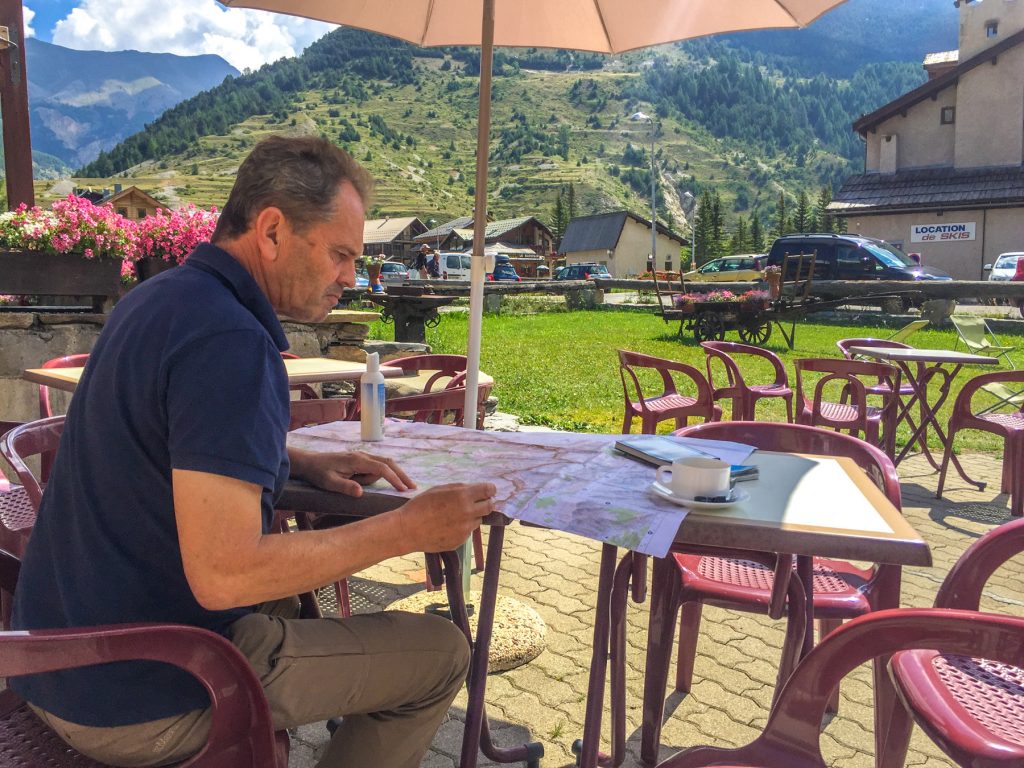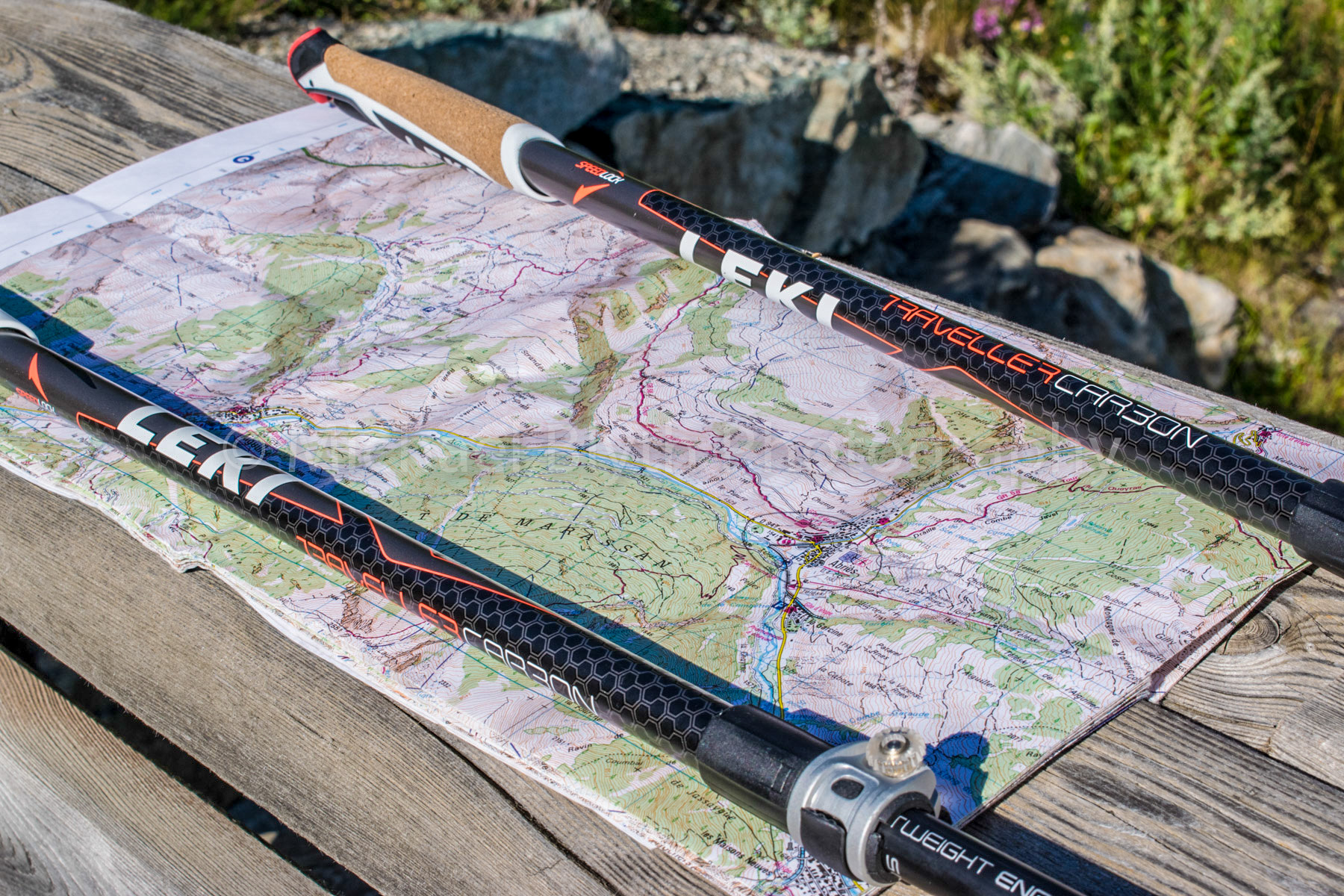Day Three Ceillac
Our day off was pleasantly gentle, limp around the village, goats cheese and ham salad for lunch in a charming eatery on the outskirts, a siesta, then two hours in L’office de Tourism while the charming lady cancelled some refuges and rescheduled others. Our recovery day had upset the schedule of bookings, and timing, we would be unable to complete the planned route, so with the assistance of this lady we chopped quite a chunk off our planned route, avoiding the excursion into Italy, and allowing us to adopt the regime of two hard days followed by a ‘rest’ day .
Mentally this was a hard one for me, having spent many hours in the planning, and to be honest – in telling anyone who would pretend to listen, how far we were going and how high we would be climbing, in that self-esteem raising way of which I am all too frequent guilty.
The best place to start the Tour de Queyras.
It was here we realised that if travelling by car, as we had, rather than by train as the guidebook suggested, this was the place to start. With a field to park the car in and a more gentle start to the GR58, the route we were now on.

Re-planning the route, trimming many miles from our journey.
It was also here where we met several couples with whom we shared much of the journey, bumping into them at several of the refuges on the route and indeed sharing greetings at Christmas, in particular Lawrence and Stéphane from Brittany, also Muriel and Emmanuel, who it seemed were fated to be seated with us each night, by direction of successive patrons.
Three essential bits of kit to take Nordic Walking in the Alps
For those of you interested in our kit selection.
Choosing a rucksack for Nordic Walking
We were already glad that we had spent time and effort in reducing the weight we carried, but at the end of the day, and even if you’re not camping, there is quite a lot off kit to carry. Observations of fellow people ‘with poles’ showed a marked weighting in favour of four brands, the most common day-sack was Osprey, followed by Lowe Alpine, Berghaus and Deuter. I chatted with a couple of suppliers about size and make, and both of us subsequently restricted ourselves to thirty eight litre state-of-the-art rucksacks, ours were supplied by Osprey
Choosing Nordic Walking Poles for Alpine trekking.
In the Uk there are it seems two main choices, Leki, and Excel, with a number of ‘others’ available from the likes of Amazon and E-bay. We selected telescopic Nordic Walking poles by Leki, aluminium for Favourite Wife and carbon for me. Having had fixed poles previously I found these to be incredibly flexible in use. There were times when a longer pole was advantageous and others, when for example a narrow path cut deeply into the terrain, where taking 20-30cm off the length meant we could still use our poles without raising out hands to shoulder-height!
Choice of footwear for a Nordic Walking Trek at altitude.
Footwear took the greatest research, being high-alpine terrain we felt we needed good ankle support, but with sufficient flexibility to Nordic Walk properly. We found no sites that talked about trekking in alpine conditions with Nordic Walking poles, so had to decide based on our many years of experience, and seek a lightweight boot. We went for Salomon Quest boots from Mastershoe, both of us found them extremely comfortable although Favourite Wife took the advice given by GoOutdoor to use inserts. Wearing in and proper lacing should always be considered essential – there are some fascinating You-tube videos on the finer techniques of tying your bootlaces, and indeed one or more suggest replacing the laces with paracord.
As an irrelevant gripe, can anyone enlighten me as to why walking boots come with sufficient excess bootlace to truss a chicken – or a cauliflower steak if you’re not a meat eater?
